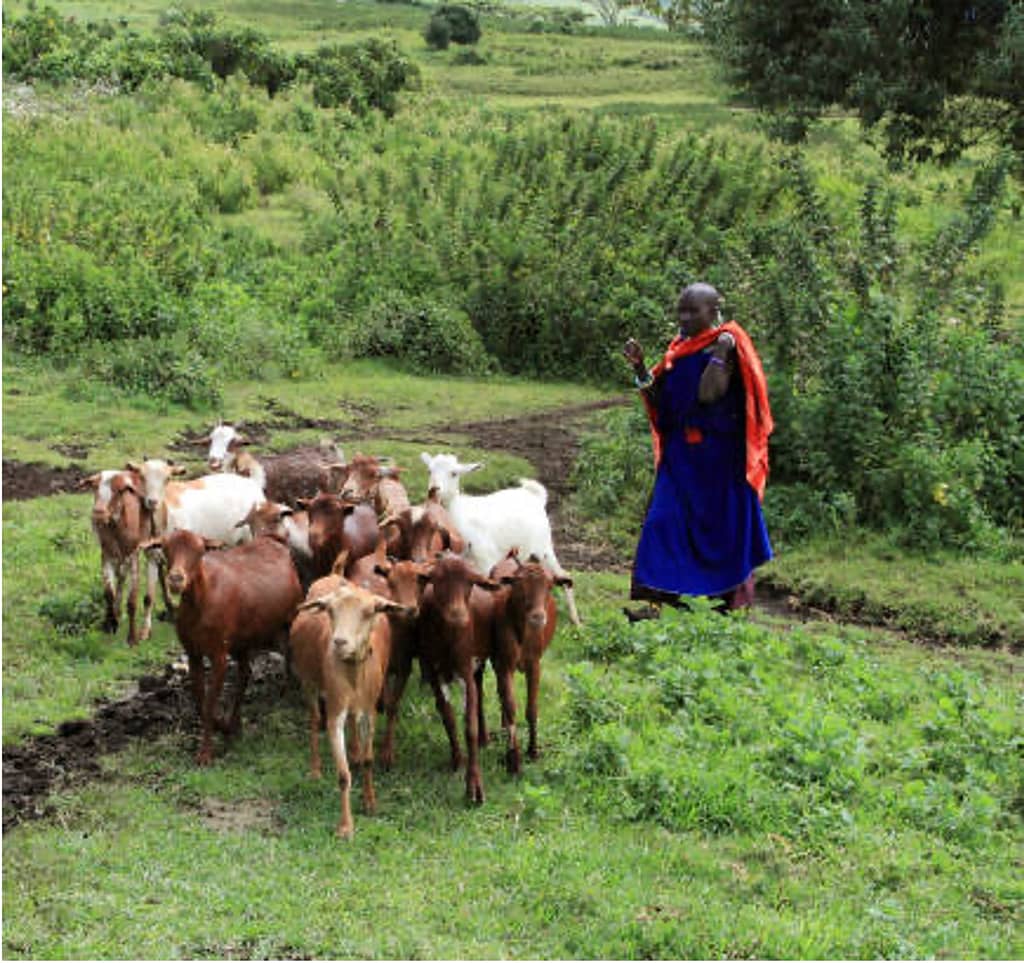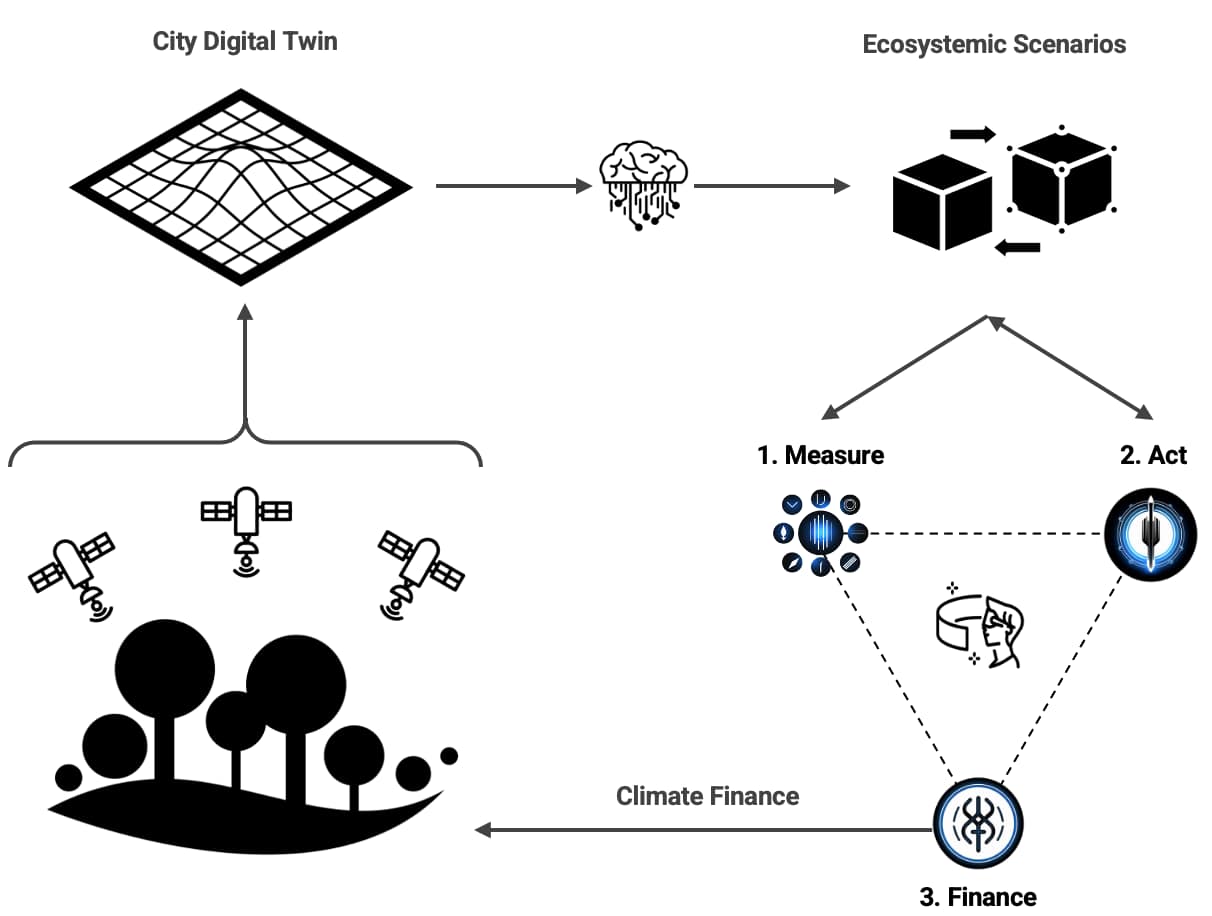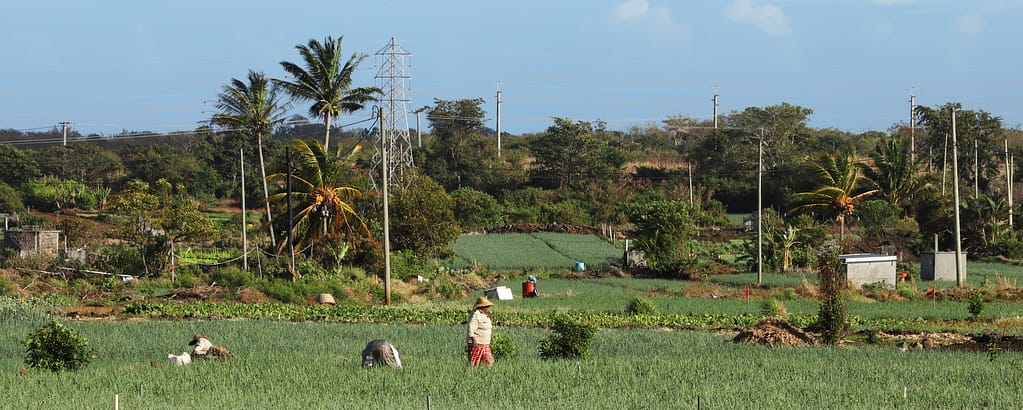Degraded Lands restoration methodology : our “Integrated & Regenerative” approach
Implementing an ecosystem restoration project often involves reconciling occasionally conflicting environmental and economic objectives. That’s why, at LDN Advisory, we’ve formulated the « Integrated Regenerative – IR » approach. Our IR approach focuses on aligning the different stakeholders
restoration goals with practical strategies that comprehensively address the environmental, social, and economic facets of a specific project.


Earth Observation : our Technology Model
LDNA technology partners utilize cutting-edge New Space technologies, like Remote Sensing and Earth Observation with advanced satellites, for ecosystem restoration. These innovations provide high-resolution imagery and comprehensive data on soil and plant composition, establishing a historical baseline and enabling ongoing ecosystem monitoring. Digital twin technology, incorporating the Internet of Things, allows real-time data collection and virtual models replicating ecosystem dynamics, aiding in simulations for restoration planning. In the context of carbon and goods traceability, New Space and Digital Twin technologies ensure transparency, accountability, and trust, crucial for safeguarding the reputation of landowners and partners amid growing scrutiny and regulatory pressures.
Engagement Model : Our Governance Charter
The LDNA team emphasizes the critical role of early stakeholder engagement in ecosystem restoration projects, having learned from extensive field experience. By inviting stakeholders from the project’s outset, trust is built, ensuring their concerns shape the project design. Actively listening to stakeholders fosters knowledge-sharing, particularly about local ecology and cultural practices, with trust maintained through clear communication. Ultimately, demonstrating equitable distribution of restoration benefits, encompassing economic gains, improved quality of life, enhanced ecosystem services, and job creation, remains paramount..
For additional details, refer to or download below :


Revolutionizing Ecosystem Restoration: A Sustainable, Risk-Averse Model with Global Commitment
Our ecosystem restoration model effectively forecasts, manages, and prevents risks inherent in these long-term projects. To mitigate political and economic instability, we advocate declaring the project a national commitment under UN Conventions, with dual endorsement from traditional and state authorities. Ensuring sufficient funding and skilled personnel, we employ financial due diligence and elasticity analysis to avoid incomplete or ineffective efforts. Additionally, we proactively assess land grabbing risks through legal and field audits, ensuring adherence to UN Global Compact principles by all project stakeholders from the outset


